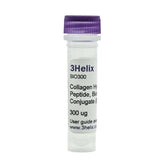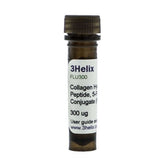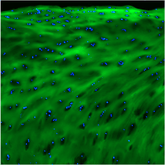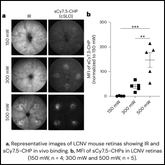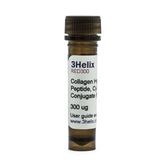What can Collagen Hybridizing Peptides tell us about Chemical Warfare?
When talking about national security, collagen is not typically a topic of conversation. However, a fascinating article published in The Ocular Surface this year shows the necessity of understanding how mustard gas damages collagen. Sulfur Mustard (Mustard Gas, SM) is a potent, extensively used biological weapon that presents a threat to military personnel even...
View Details
Beyond Scar Tissue: Can Understanding Cardiac ECM Remodeling Revolutionize Heart Repair?
Cardiovascular biology has seen significant advances in recent times, yet heart disease remains the leading cause of morbidity & mortality worldwide. A critical challenge following an acute Myocardial Infarction (MI, heart attack) is the irreversible loss of millions of cardiac muscle cells (Cardiomyocytes, CM). These lost cells are replaced by fibrotic scar tissue....
View Details
CHPs as Targeting Drug Delivery Agent in Osteoarthritis
Osteoarthritis (OA), a debilitating degenerative joint disorder, is characterized by progressive cartilage degradation. Current treatments for osteoarthritis focus on managing symptoms like pain and stiffness through medications (oral and topical), physical therapy, exercise, supportive devices, and sometimes joint injections or surgery in severe cases, with currently no cure to reverse cartilage damage. In the...
View Details
Visualizing Mast Cell-Driven Collagen Damage in nAMD Progression
Collagen Hybridizing Peptides track mast cell-driven collagen remodeling & degradation in neovascular Age-related Macular Degeneration (nAMD) research. Explore the study's key insights and learn about how you can target damaged collagen for insights in your research!
View Details
Collagen Hybridizing Peptides Validate a Novel Bone Organoid Model
Validate collagen integrity in your biomaterials with 3helix CHPs. Discover how Collagen Hybridizing Peptides (CHPs, 3Helix Inc.) ensure reliable data in tissue engineering and bone remodeling research.
View Details
First Collagen Hybridizing Peptide Application for Collagen Damage to Nervous Tissue: CHPs Help Confirm Distinct Patterns of Structural Damage in Epineuroclasis and Endoneuroclasis.
Peripheral Nerve Injuries (PNIs) represent a significant clinical challenge, frequently resulting in disability and chronic pain, particularly in younger patients. Recovery following PNI is oftentimes unpredictable and the decision to pursue surgical intervention is complicated by a limited ability to accurately assess the severity and extent of tissue damage. The current PNI classification system,...
View Details
Utilizing Collagen Hybridizing Peptides to Assess Collagen Integrity in a Senolytic Therapy Model for Intervertebral Disc Degeneration
Extracellular matrix (ECM) degradation, particularly damage to structural collagen, is a hallmark of numerous pathologies, including Intervertebral Disc (IVD) degeneration. Assessing the structural integrity of collagen in situ is critical for understanding disease mechanisms and evaluating the efficacy of potential interventions. Collagen Hybridizing Peptides (3Helix, Inc.) offer a unique tool for this...
View Details
Beyond Fibroblasts: CHPs provide Key Evidence for Keratinocyte-Driven Skin Development
Collagen is skin's foundation, but how it's truly built has been hidden – until now. Discover how see-through axolotls are providing an unprecedented window into this process, revealing secrets that could reshape skin science.
View Details
